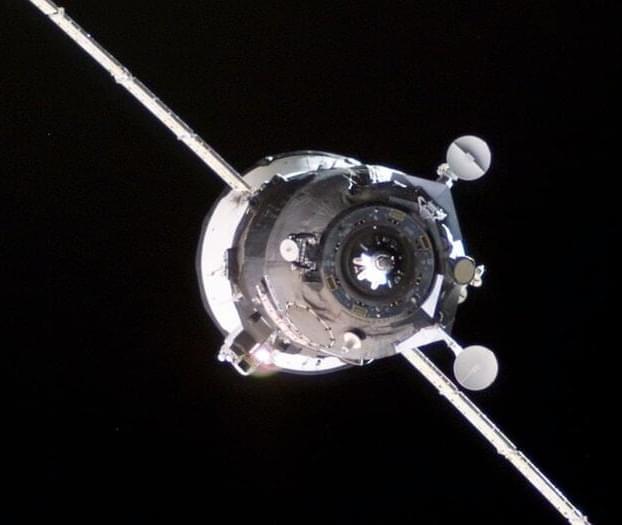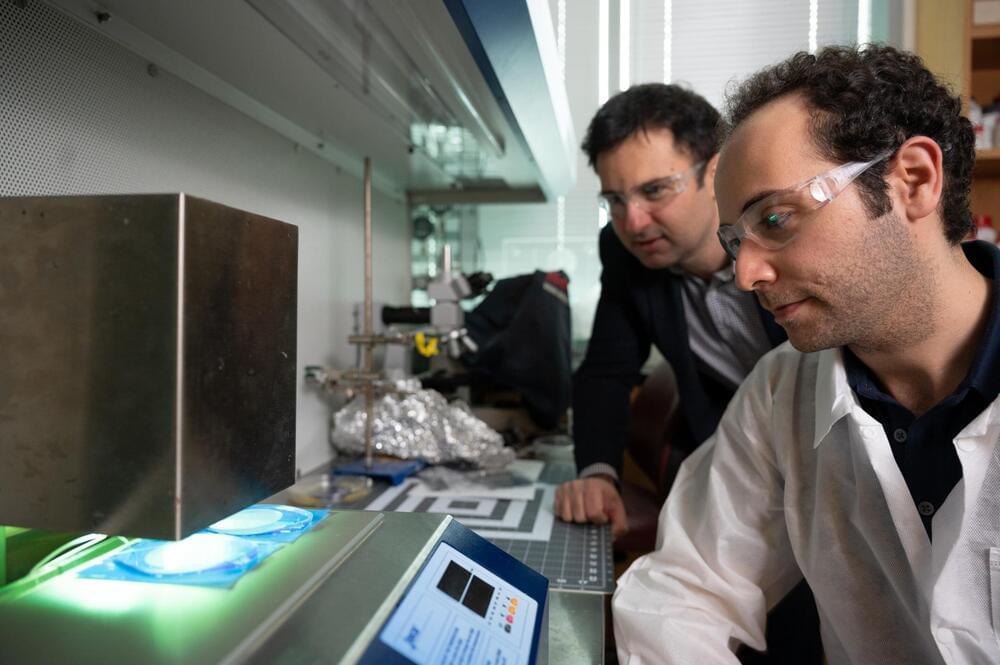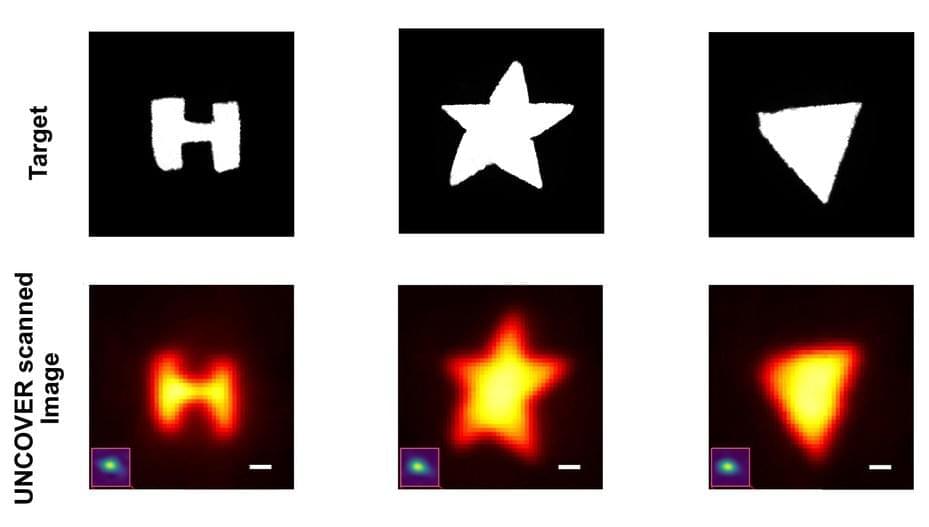Please like, comment, and subscribe!
The Neuro-Network.
Please like, comment, and subscribe!
The Neuro-Network.
27 seconds.
The #medical #university of South Carolina and the University of Florida have shown the first non-invasive visualization of the #brain waste disposal clearance system in real time.
Abstract: #nature Communications: https://www.nature.com/articles/s41467-021-27887-0
McKnight Brain Institute University of Florida: https://mbi.ufl.edu/2022/01/18/mri-study-unveils-key-details…al-system/

Over its 23-year lifetime, the station has been an important example of how Russia and the United States can work together despite being former adversaries. This cooperation has been especially significant as the countries’ relationship has deteriorated in recent years. While it remains unclear whether the Russians will follow through with this announcement, it does add significant stress to the operation of the most successful international cooperation in space ever. As a scholar who studies space policy, I think the question now is whether the political relationship has gotten so bad that working together in space has become impossible.
Russia operates six of the 17 modules of the ISS — including Zvezda, which houses the main engine system. This engine is vital to the station’s ability to remain in orbit and also to how it moves out of the way of dangerous space debris. Under the ISS agreements, Russia retains full control and legal authority over its modules.
It is currently unclear how Russia’s withdrawal will play out. Russia’s announcement speaks only to “after 2024.” Additionally, Russia did not say whether it would allow the ISS partners to take control of the Russian modules and continue to operate the station or whether it would require that the modules be shut down completely.

All Sheekey vids are a must,.
A landmark study that came out in 2005 showed that if you fused the blood systems of old and young mice, a process known as heterochronic parabiosis, it rejuvenated the cells of old mice. It suggested that there was something in the blood and there were two possible explanations; there were rejuvenating factors in the young blood, or there was dilution of pro-aging factors in the old blood. Or some combination of both.
Well, since 2005 more studies have come out. A 2016 study showed that heterochronic blood exchange, so just transfer from young to old, or old to young, without fusing, had a greater impact when old blood was given to young, than when young blood was given to old. In better words, “the inhibitory effects of old blood are more pronounced than the benefits of young”.
So, somewhat ruling out “factors in the young blood”. But even more support came from studies published a few years ago, where again they supported this latter theory. You see, simply diluting the old blood, that is taking plasma out of blood of the old mice and replacing it with saline and albumin (abundant protein found in blood) had the same effect. This process, known as neutral plasma exchange, involves no Frankenstein surgery or young blood vampire like scenario. AMAZING.
But, it still didn’t address why or how? The authors of that paper left us with this rather interesting hypothetical hypothesis graph of what potentially might be happening to some factors present in the blood, but they were otherwise unsure on what or how these beneficial effects were being achieved. What were the important factors to remove?
Artificial intelligence has mostly been focusing on a technique called deep learning. It might be time to reconsider.
https://www.jpost.com/health-and-wellness/article-714670 https://youtu.be/uc6f_2npsx8
The seeds of innovation appear to be seedless. According to game-changing research led by our very own Dr. Lior Rubinovich, it is now finally possible to grow avocado plants solely from tissue culture. Why is this good? Aside from being free of deformities, disease-proof, and significantly fast-growing – cultivated avocado plants mean genetic uniformity, which implies that all plants originate from the same delicious, nutritious, and healthy tissue. The founding of Bestree means a great deal for the northern region of Israel, both financially and innovatively. Therefore, we are proud to share this inspiring research with the rest of the world! Read more about Bestree & cultivated avocados in the full article https://www.ice.co.il/media/news/article/876527
האם ניתן לרבות שתילי אבוקדו בתרביות ריקמה? עד לפני כמה חודשים התשובה הייתה: “אולי, אבל טרם הצלחנו להבין כיצד לעשות זאת” היום התמונה היא אחרת, בעקבות מחקרו פורץ הדרך של ד“ר ליאור רובינוביץ’ הפך אבוקדו שמיוצר בתרבית ריקמה לרעיון שלא רק ניתן ליישמו במעבדה אלא גם למסחרו ולהביאו כבשורה לחקלאות העולמית! זהו פיתוחה וחזונה של חב’ Bestree אשר הוקמה על בסיס מחקרו של רבינוביץ’ ונחנכה בטקס חגיגי בקיבוץ אל-רום שבגליל. מעבר ליתרונות השיווקיים והכלכליים של המהלך – הקמתה של חב’ Bestree שמה את מיגל בשורה הראשונה של מכוני מחקר בעולם ובכך מקדמת גם את הפיתוח וההתחדשות החקלאית והמדעית של צפון מדינת ישראל! לחצו לקריאה מורחבת אודות חב’ Bestree https://www.ice.co.il/media/news/article/876527
Music video by Styx performing Mr. Roboto. © 1983 A&M Records.
Best of Styx: https://goo.gl/n2JFbN
Subscribe here: https://goo.gl/UiH6GG
#Styx #MrRoboto #Vevo
Join us on Patreon!
https://www.patreon.com/MichaelLustgartenPhD
Bristle Discount Link (Oral microbiome quantification):
ConquerAging15
https://www.bmq30trk.com/4FL3LK/GTSC3/
Cronometer Discount Link (Daily diet tracking):
https://shareasale.com/r.cfm?b=1390137&u=3266601&m=61121&urllink=&afftrack=
Support the channel with Buy Me A Coffee!
https://www.buymeacoffee.com/mlhnrca.
Paper referenced in the video:
Daily Fasting Improves Health and Survival in Male Mice Independent of Diet Composition and Calories.
https://pubmed.ncbi.nlm.nih.gov/30197301/

Researchers at the Georgia Institute of Technology have found a detection method that could revolutionize cancer treatment by showing how cancers metastasize and what stage they are.
Cancer spreads via circulating tumor cells (CTCs) that travel through the blood to other organs, and they are nearly impossible to track. Now, researchers at the Georgia Institute of Technology have found a detection method that could revolutionize cancer treatment by showing how cancers metastasize and what stage they are. This could lead to earlier and more targeted treatment, beginning with a simple blood test.
When a tumor starts metastasizing, it sheds its cell into the blood. An individual cell often doesn’t survive the bloodstream on its own, but clusters of cells are much more robust and can travel to other organs, effectively pushing the cancer to a metastatic state.

Imagine driving home after a long day at work. Suddenly, a car careens out of an obscured side street and turns right in front of you. Luckily, your autonomous car saw this vehicle long before it came within your line of sight and slowed to avoid a crash. This might seem like magic, but a novel technique developed at Caltech could bring it closer to a reality.
With the advent of autonomous vehicles, advanced spacecraft, and other technologies that rely on sensors for navigation, there is an ever-increasing need for advanced technologies that can scan for obstacles, pedestrians, or other objects. But what if something is hidden behind another object?
In a paper recently published in the journal Nature Photonics, Caltech researchers and their colleagues describe a new method that essentially transforms nearby surfaces into lenses that can be used to indirectly image previously obscured objects.